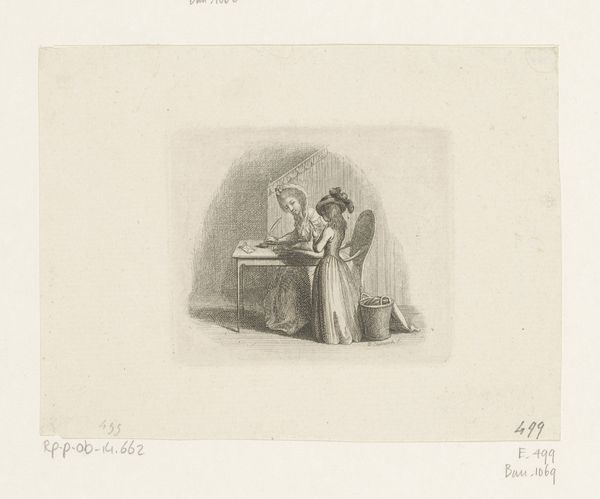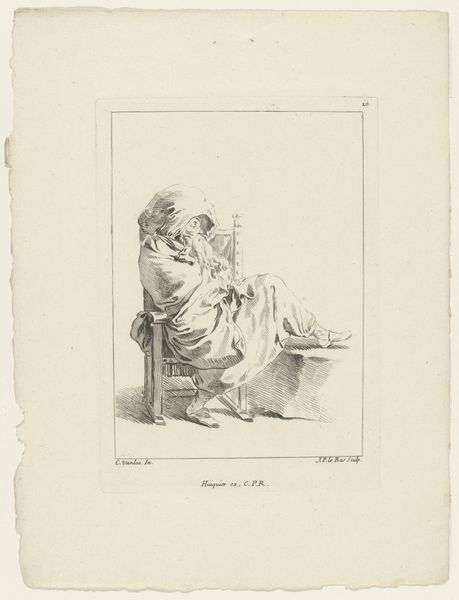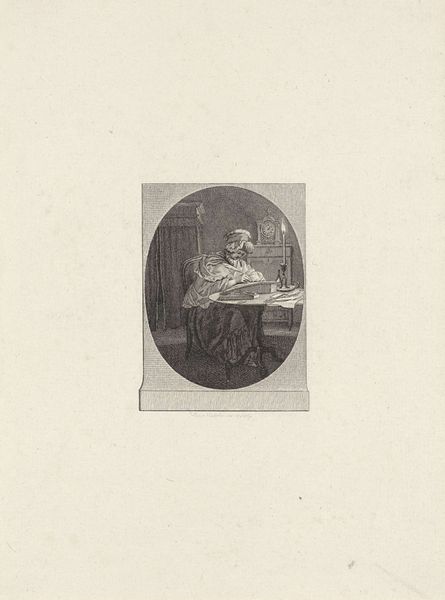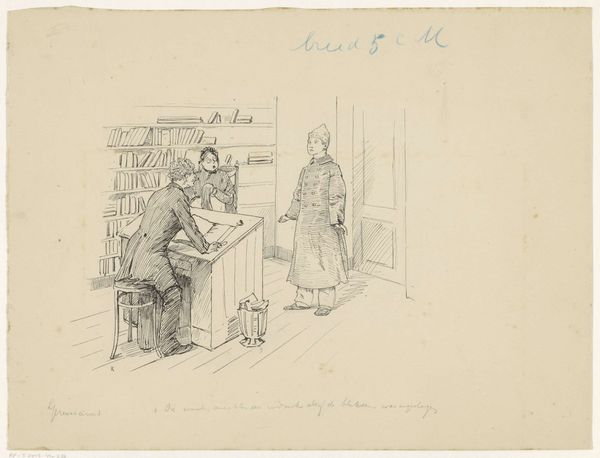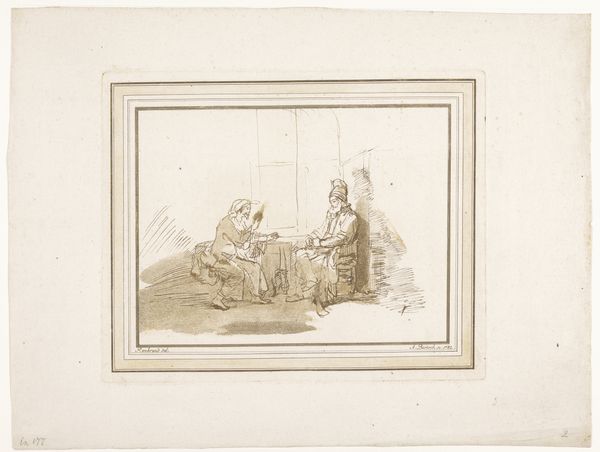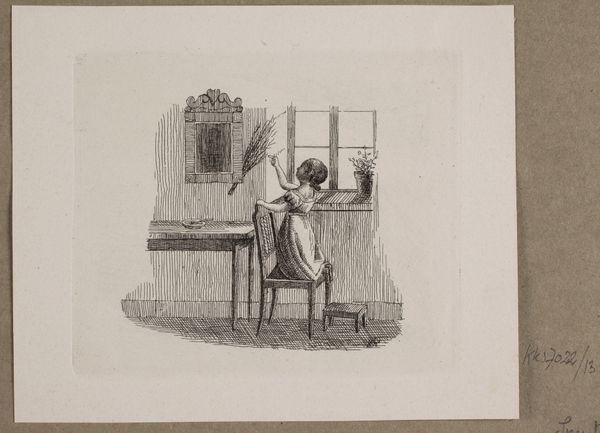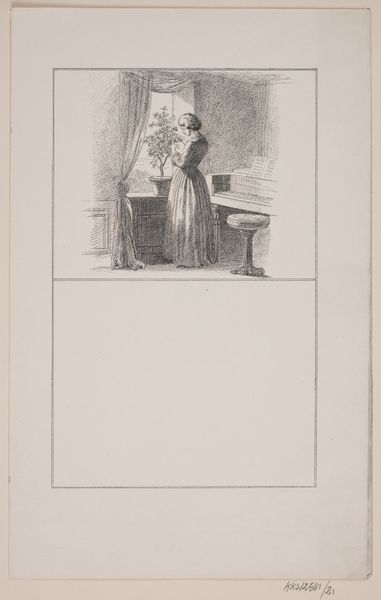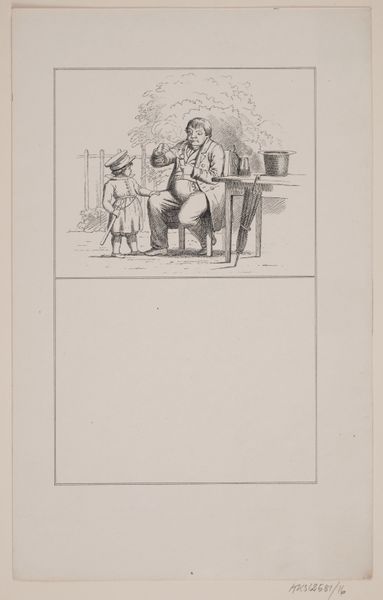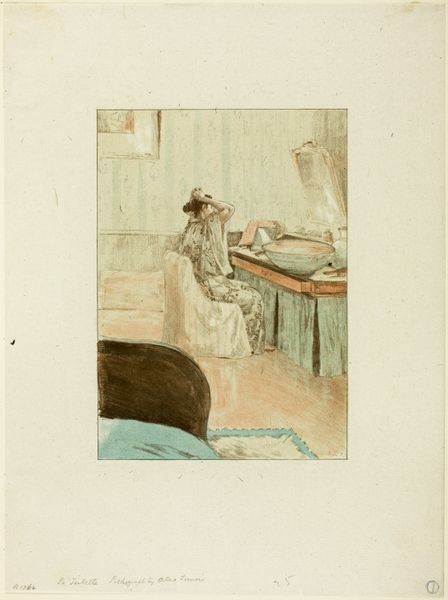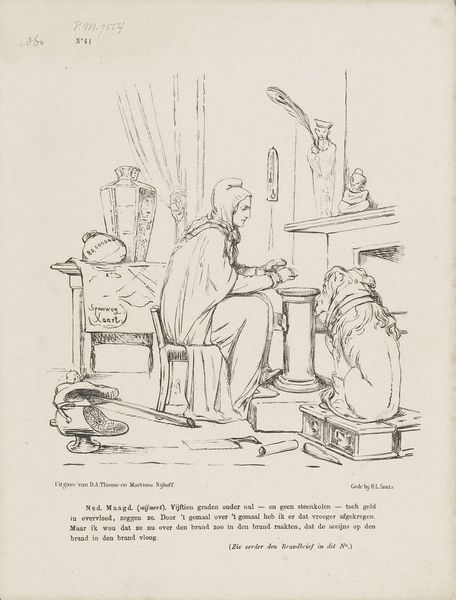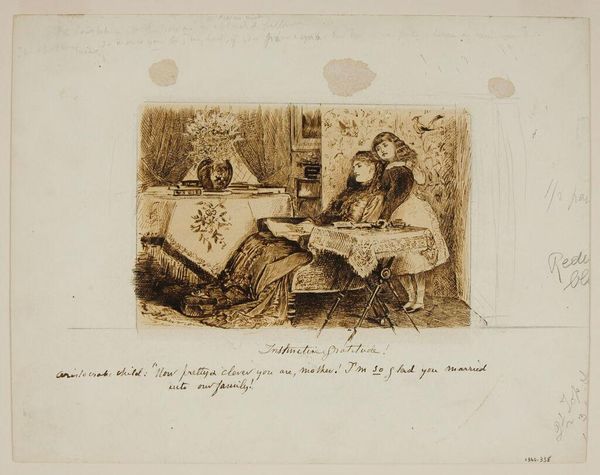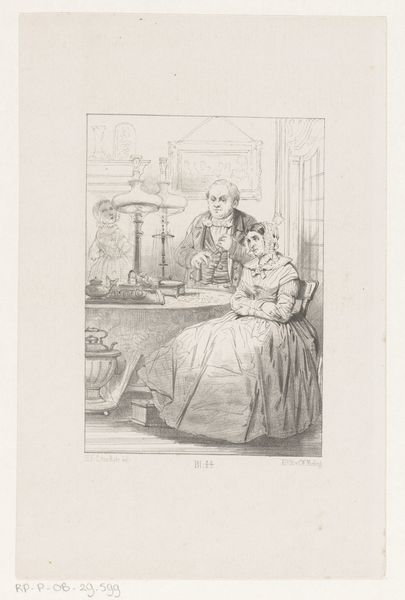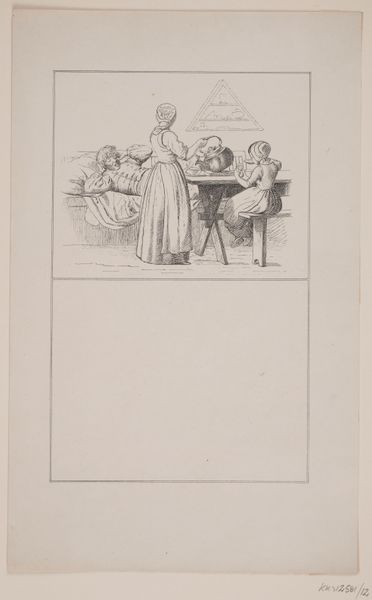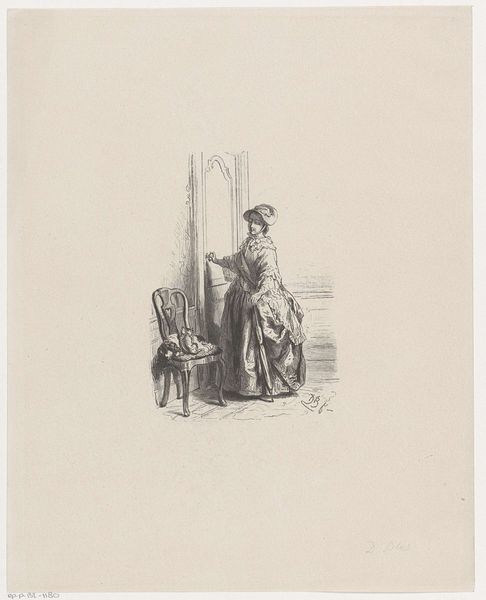
drawing, paper, ink, pen
#
portrait
#
drawing
#
pencil sketch
#
paper
#
ink
#
pen-ink sketch
#
pen
#
genre-painting
#
realism
Dimensions: height 274 mm, width 364 mm
Copyright: Rijks Museum: Open Domain
Curator: This pen-and-ink sketch, "Two Old Women in an Interior," by Heinrich M. Krabbé, made before 1898, offers us a glimpse into a quiet domestic scene. The drawing, executed on paper, is currently held in the collection of the Rijksmuseum. My first impression? Somber, a bit melancholic. Editor: I see that too. The sparseness of the lines, the muted tones... it evokes a feeling of stillness, almost resignation. But tell me, what stands out to you from a historical perspective? Curator: Krabbé was known for his realist depictions of everyday life, particularly within working-class communities. Images like this humanized elderly people by placing their aging in familiar settings that made sense for both cultural groups and the history of public policy in Dutch society. It’s not overly sentimental, just...observational. Editor: Observe those two women at the table. I notice the subtle symbols, for example, the window showing plant motifs of renewal, the table with domestic utensils... What could they suggest about Krabbé's symbolic language in his broader oeuvre? Curator: That's an interesting interpretation! Given his political leanings, it’s tempting to view them through the lens of the late 19th-century rise of socialism in the Netherlands. Was he perhaps offering a critique of social support, showing the reality of isolation within this era? The symbolism could even comment on the political exclusion from government representation for elder folks as well as other working people. Editor: Perhaps. The older woman seems to sit idly, which, combined with other symbols might say something bigger about cultural continuity and the significance of past generations—a comment, maybe, on lost knowledge. Curator: Possibly. Krabbé had ties to artistic circles involved in social commentary; though the artwork feels deeply intimate and personal, perhaps those views became integrated with the narrative the picture tells. Editor: This work definitely opens avenues for different readings—personal reflection, cultural analysis... I feel I leave here pondering on these women's interior world a bit longer. Curator: I agree; this unassuming piece of art presents many entry points for understanding social concerns and everyday life during the era.
Comments
No comments
Be the first to comment and join the conversation on the ultimate creative platform.
